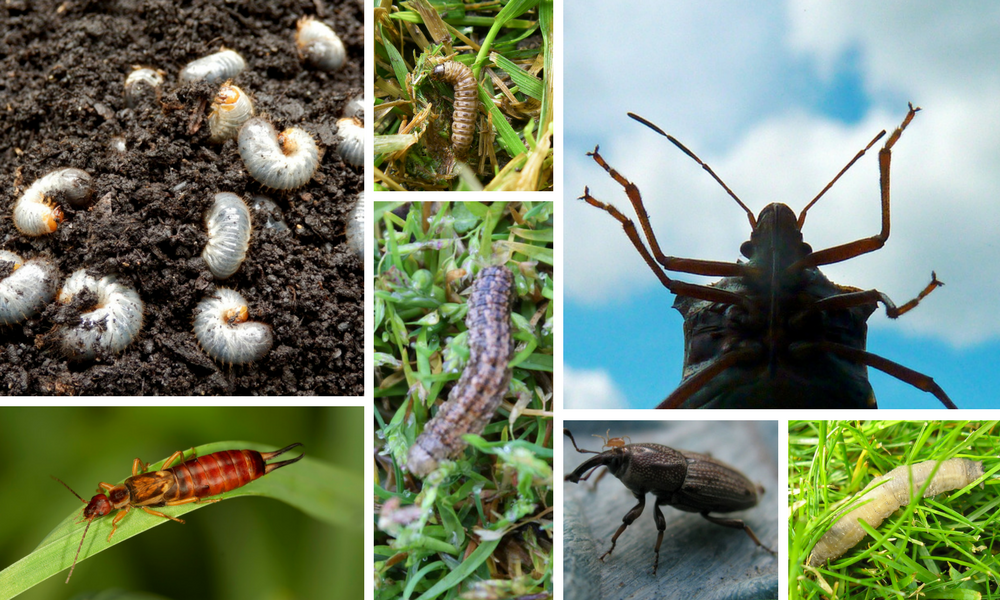
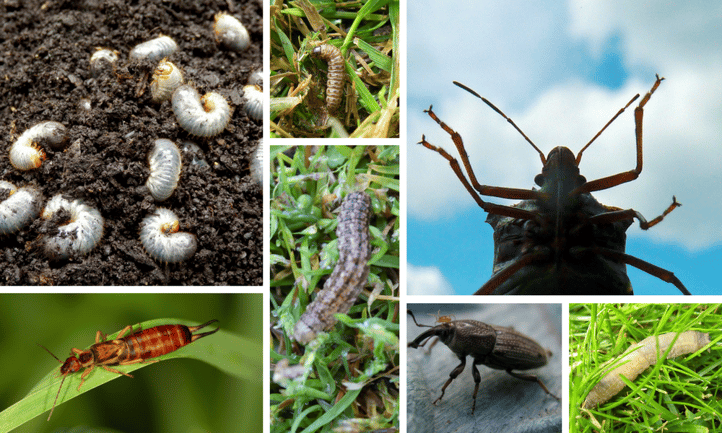
A green, luscious lawn is a beautiful thing, but unless you really get to know your lawn, all of that beauty can fade before your eyes.
Insects are often a difficult-to-detect issue for the average homeowner. While it's not hard to notice browning areas in your lawn, you could write that off as a multitude of things; lack of rain, Summer stress, or just a need for seed.
Unless you get down to soil level and really have a look, you might not realise the tiny little insects eating your grass blades, slowly but surely.
Here are 7 common lawn insects that our technicians across the country encounter.
White Grubs
These nasty pieces of work are the larvae of beetles. Also known as the European Chafer beetle, May/June beetle, or Japanese beetle, you'll find these in many home lawns across North America.
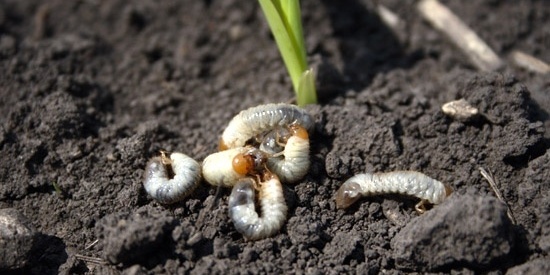
If left untreated, white grubs will slowly damage your lawn by eating your grass roots. Generally, a lawn damaged by white grubs has browning areas that slowly get bigger as the grubs move through the lawn. As they eat the roots, you'll be able to pull the grass blades out of the lawn without much effort.
In most cases, the more devastating damage is from other animals destroying the lawn in search of little grubs to feed on. Crows have been known to rip out large patches of lawn, while raccoons and skunks like to dig up large areas of lawn and roll it back.
White grub damage begins in the Fall and continues through to Spring, until it matures and escapes from the lawn. For this reason, White Grub control methods are best done in the Fall.
Chinch Bugs
These little guys live in the thatch layer of your lawn.
Like a lot of us, Chinch Bugs are most active in the Summer, and can do a lot of damage in July and August. Unfortunately, that damage is often written off as drought damage, so the real issue sometimes gets picked up too late.
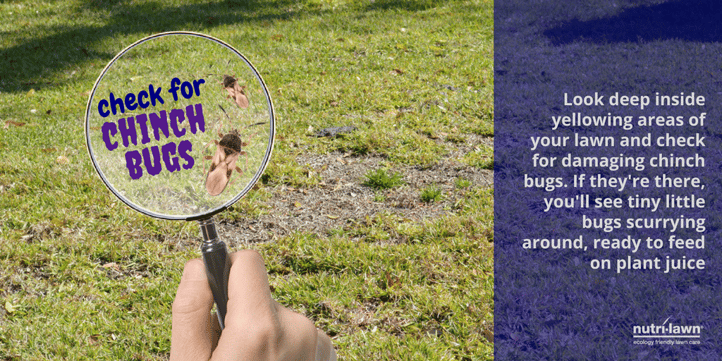
Chinch bugs feed on your grass and suck out the plant juice. While they're busy doing that, they release enzymes which cause your grass to turn brown and die.
In the heat of Summer, it's important to closely inspect your lawn to determine if the yellowing is, in fact, Summer stress or chinch bug damage.
RELATED > Managing and Recovering From Chinch Bug Damage
Chinch Bug control applications effectively target chinch bugs in their nymph stage, which is when they are actively feeding on the lawn and causing damage.
Leatherjackets
These guys get their name from their tough skin. Leatherjackets are actually the larvae of the European Crane Fly, which is fairly harmless in it's adult stage.
Leatherjackets, however, like to feed on the root crowns of the grass during Fall and continuing through Spring.
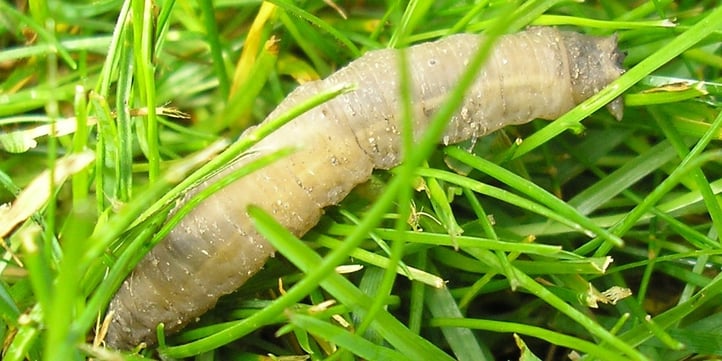
Leatherjackets mostly stay underground, but if the night is warm and damp, they might come up to the surface to feed on other plants. They typically stop feeding in mid May, and will emerge as adults in July and August.
Nematodes are an effective way of dealing with leatherjackets. Although the leatherjackets alone cause minor damage, other animals like feeding on them, so it's best not to let them take over your lawn.
Cutworms
Similarly to other insects we've talked about, Cutworms tend to attack lawns in their larvae stage.
Generally, they feed at night. Cutworms like to burrow into the thatch and emerge at night to feed on surrounding leaves and crowns.
Luckily, the damage they cause by feeding on the lawn is usually only restricted to small areas that recover on their own.
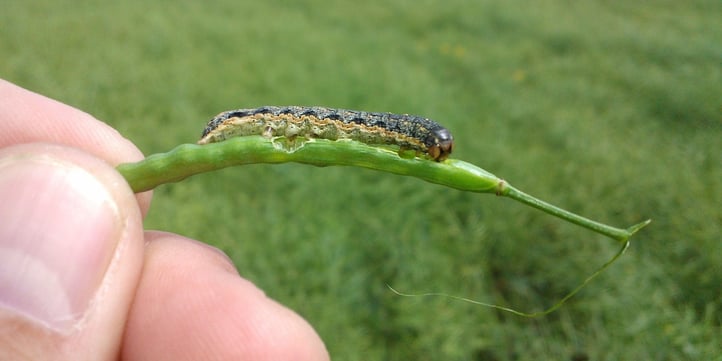
If you have cutworms in your lawn, consider overseeding with entophyte enhanced turfgrasses. Beneficial nematodes can also be used to reduce cutworm larvae populations.
Sod Webworms
Sod Webworms can be very destructive in their caterpillar and larval stages.
During early Spring, they feed on the upper root systems, stems, and grass blades of your lawn. In early May, they pupate in underground cocoons, before emerging as adults two weeks later.
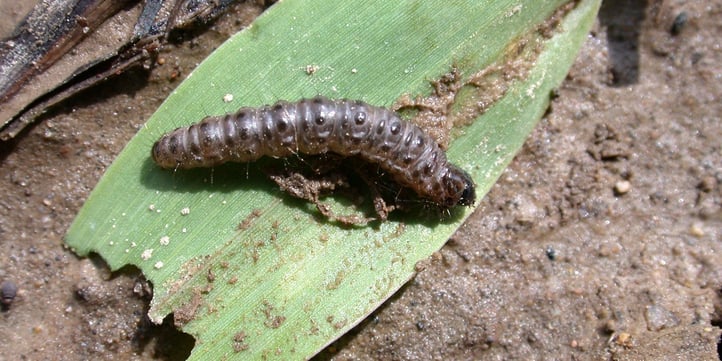
You can usually spot Sod Webworm damage in July and August, when growth isn't rapid. Summer heat makes any plant damage worse, since the damaged crown gets even more sun exposure.
European Earwigs
European Earwigs are a common pest that feed on soft plant shoots and eat small holes in foliage and flowers.
Since they often eat other garden pests, these little guys can be beneficial. But they also like to feed on leaves, flowering plants, and vegetables, which can make them an expensive pest.
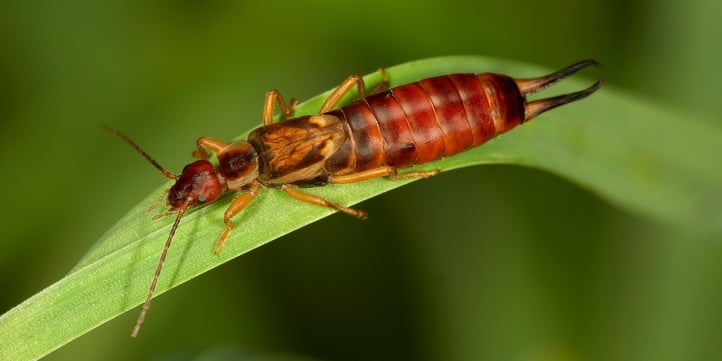
They hide in cool, dark, and moist places during the day, like in your rubbish, within fences, and other cracks and crevices. While searching for food, they'll often climb over houses, trees, and fences, and might accidentally make their way into your home in June or July.
Bluegrass Billbugs
The most damaging Bluegrass Billbug life stage is - you guessed it - the larval stage. These guys like to eat grass roots and stems. The damage they cause looks like drought stress, and larger areas may appear a yellow or brown colour that doesn't green up with watering.
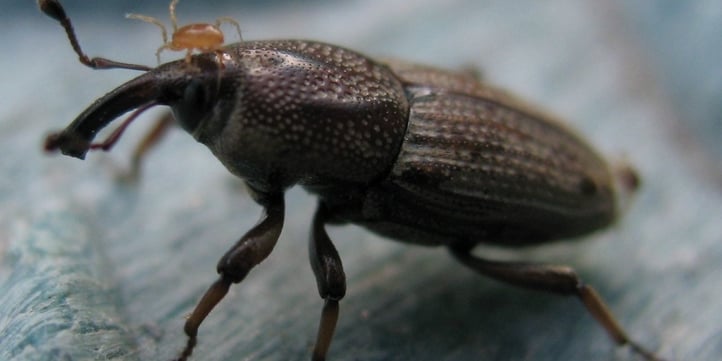
By late June, their eggs begin hatching. This is the best time to control them; they are still young and may not have caused damage yet. Serious damage is often visible in the Summer, so keep an eye on any brown patches that are slowly getting bigger.
How To Control Lawn Insects
Depending on where you are in Canada, pest control methods will vary.
If you have or suspect you might have an insect problem, the best thing to do is to talk to your local Nutri-Lawn. Ask them;
- How you can naturally avoid insect problems
- What the right cultural practices are for your lawn
- What insect control options are available in your area
RELATED > Controlling Damaging Lawn Insects With Nematodes
For more lawn care tips and tricks, follow us on Facebook or Pinterest.
Related Posts
7 Common Lawn Insects In Canada
Insects are often a difficult-to-detect issue for the average homeowner. While it's not hard to...
Grub Talk: Lawn Pest Identification Guide
With summer around the corner, many Canadian homeowners are starting to reap the rewards of a...
Controlling Damaging Lawn Insects with Nematodes
If you're not prepared, a beautiful lawn can be destroyed right before your eyes by a foe you can...



